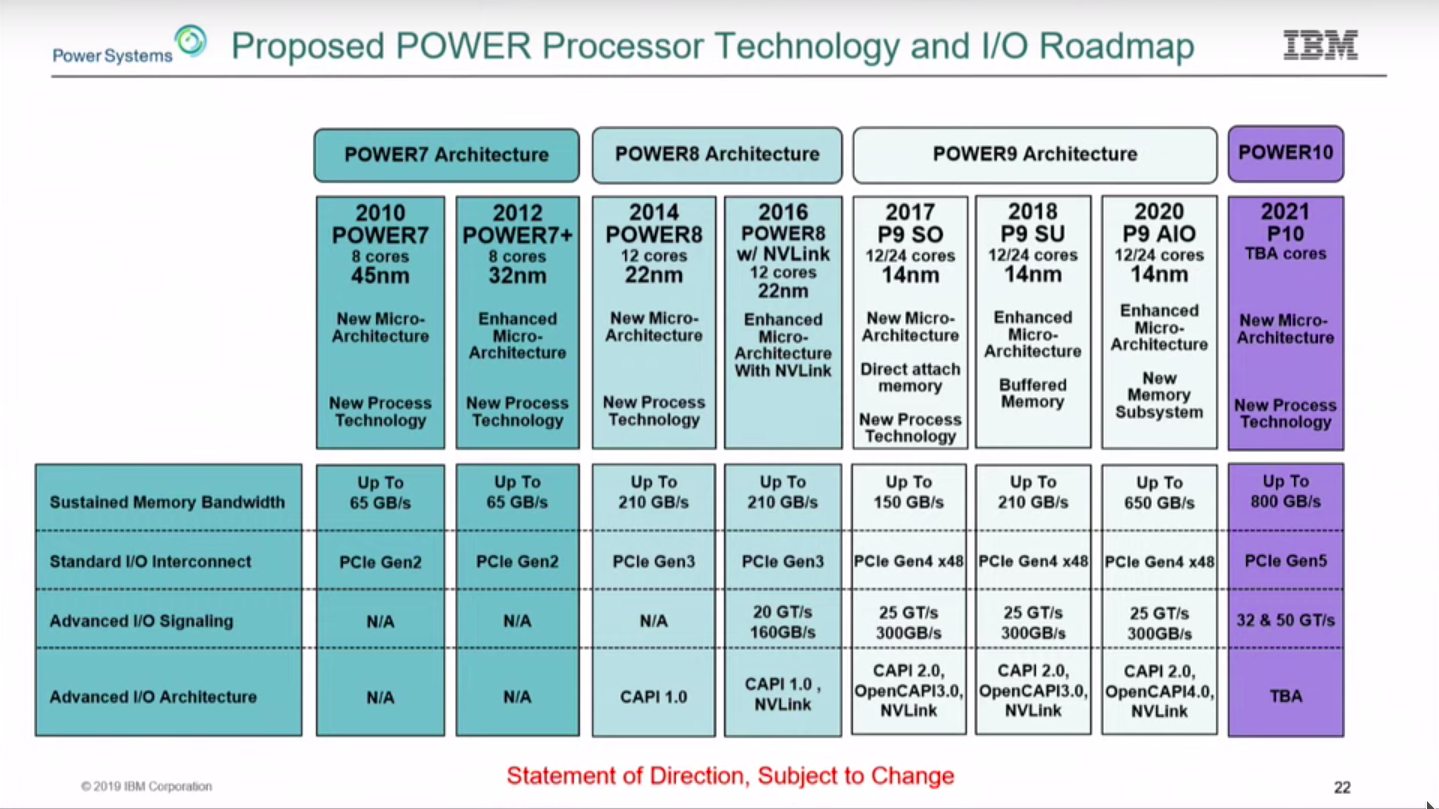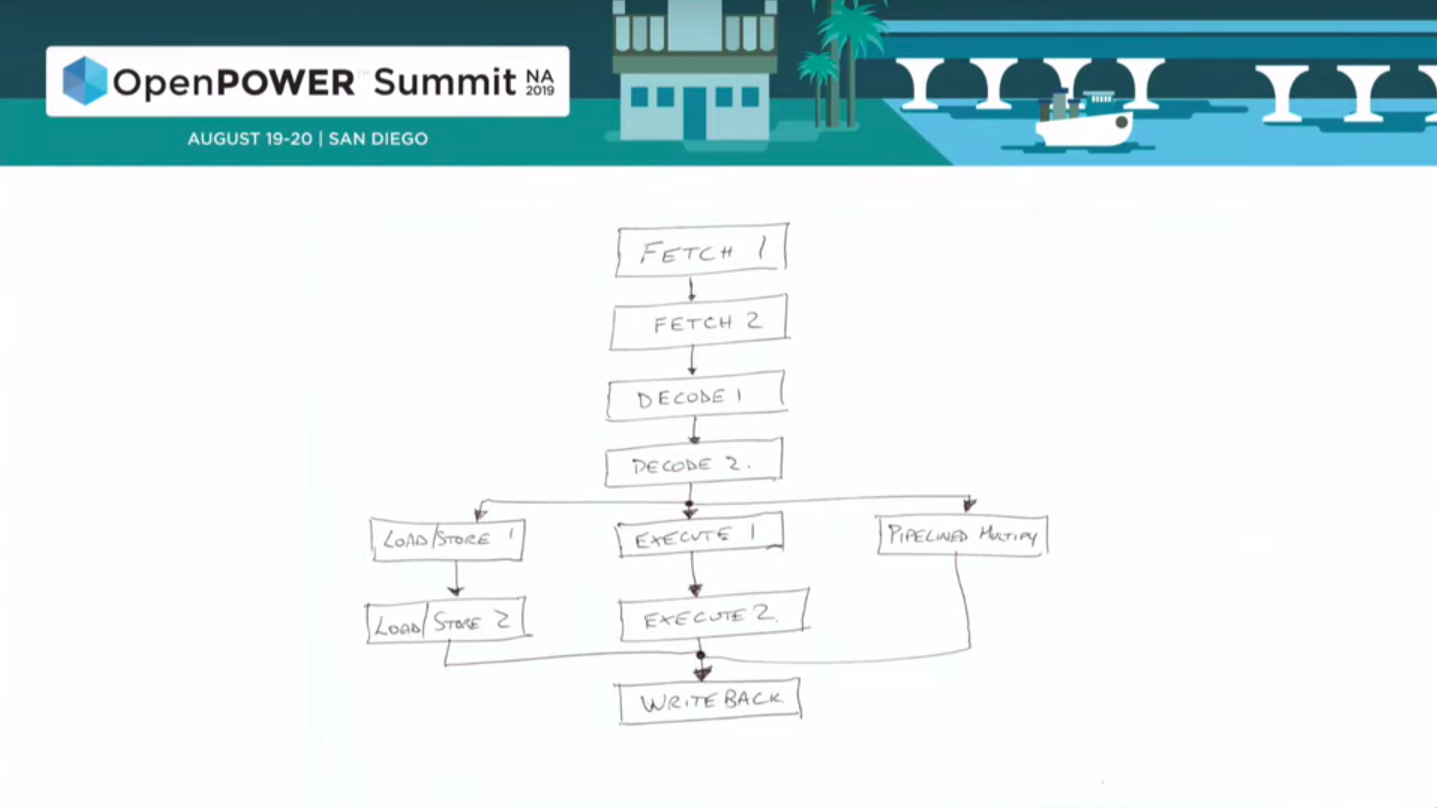IBM Open Sources Power ISA, Delays POWER10 to 2021
Late last month IBM held it OpenPOWER Summit North America 2019 event.
OpenPOWER Roadmap and OMI
Last year, at Hot Chips 30, Jeff Stuecheli outlined IBM’s roadmap. IBM originally planned POWER9 with Advanced I/O for this year with POWER10 for late 2020. Their roadmap has changed since then. GlobalFoundries giving up on their own 7-nanometer node threw the Power roadmap into turmoil, forcing them to find a new partner. They have since announced a renewed partnership with Samsung. Both POWER10 and z16 are expected to be fabricated on Samsung’s 7-nanometer EUV process. At the OpenPOWER summit, Steve Fields, a fellow from IBM outlined their new roadmap. “We had some pretty nice plans that we liked a lot for our POWER10 design point but POWER10 is now 2021. We have a new CMOS technology to bring online for POWER10 and we have a new foundry partner,†said Fields. As POWER10 got pushed back to 2021, IBM is filling the gap using their current 14-nanometer POWER9 architecture. “We wanted to make sure we could get that new acceleration and memory value decoupled from the bringup of the new technology, the new foundry, and the new POWER10 design,†Fields added. To that end, IBM introduced the new variant of POWER9 with the Open Memory Interface or OMI which effectively standardizes a memory interface for all systems and memory technologies. WikiChip takes a closer look at OMI Memory in an upcoming article.

Power ISA
IBM launched the OpenPower Foundation in 2013 to allow potential customers to improve collaboration and license IBM designs. The foundation does come short of the big goal IBM had in mind. Contrary to the foundation namesake, the Power ISA was not actually open. Unlike RISC-V, you could not freely design your own Power-based chip. On Day 2 of the OpenPOWER Summit, Ken King, General Manager for OpenPOWER at IBM made a number of big announcements. IBM launched the Open Chip Design which is essentially a multi-pronged approach to open-sourcing the Power ecosystem. “IBM is taking the Power Instruction Set Architecture and we are licensing it to the OpenPOWER Foundation so that anyone could implement on top of it royalty-free with patent rights,†said King. The process will be done through the community using an open-source governance model. In order to drive this open governance model into OpenPOWER, IBM is also moving the OpenPOWER Foundation itself to be part of the Linux Foundation. It’s important to note that the OpenPOWER Foundation will remain its own entity with its own board but it will be under the Linux Foundation. Additions and extensions to the Power ISA will be voted on through a new open governance working group within the OpenPOWER Foundation which will remain its own entity within the Linux Foundation.
Open Reference Designs for OMI and OpenCAPI
In addition to opening up the Power ISA, IBM is contributing royalty-free reference designs for OpenCAPI and OMI.
Microwatt – An Open Source Soft Core
As part of the open-sourcing announcement, IBM wanted to demonstrate something more tangible. To that end, distinguished engineer at IBM, Anton Blanchard, announced the Microwatt. Microwatt is a tiny Power core that implements the scalar subset of the Power ISA (ppc64le). It was written by IBM software engineer Blanchard over the course of the last few months. Microwatt is a very simple in-order single-issue core written in VHDL 2008 and is simulated using GHDL. You can find it on GitHub here.

–
Spotted an error? Help us fix it! Simply select the problematic text and press Ctrl+Enter to notify us.
–

